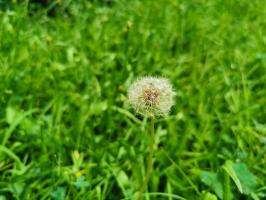Introduction
Plants are amazing organisms that have adapted to live in various environments, from dry deserts to humid rainforests. To survive, plants need water, just like any other living organism. However, unlike animals, plants cannot move to find water when they are thirsty. Instead, they have developed different ways to store water, allowing them to survive long periods without rainfall. In this article, we will explore where plants store water and how they do it.
Storing water in the stem
One of the most common places where plants store water is in the stem. Inside the stem, there are specific tissues called parenchyma that can store large amounts of water. These tissues are also responsible for transporting water from the roots to the rest of the plant. Depending on the plant species, the stem can be thick and fleshy, like a cactus, or thin and woody, like a tree. In any case, the ability to store water in the stem allows plants to survive in environments where water is scarce.
Storing water in the roots
Another place where plants store water is in the roots. Similar to the stem, the roots have tissues called parenchyma that can store water. However, unlike the stem, the roots have specialized structures called root hairs that allow them to absorb water from the soil. The root hairs increase the surface area of the roots, which facilitates the absorption of water and minerals. In some plants, like carrots and beets, the roots are the primary storage organ for water and nutrients.
Storing water in the leaves
While the stem and roots are the most common places where plants store water, some plants have developed the ability to store water in their leaves. These plants are called succulents and are typically found in arid environments. Succulents have specialized leaves that can store large amounts of water. These leaves are thick and fleshy and have a waxy coating that prevents water loss through evaporation. The most famous succulent is probably the cactus, but other examples include aloe vera and jade plants.
Storing water in the fruit
Finally, some plants store water in their fruit. In fruits like watermelons, cantaloupes, and pumpkins, the flesh is mostly water. This is why these fruits are so hydrating and refreshing to eat. The seeds inside the fruit also contain stored water, which is why they can survive long periods without water. Interestingly, some plants have evolved to produce fruits that are primarily water, like the coco de mer, a type of palm tree found in the Seychelles. The fruit of the coco de mer can weigh up to 30 kilograms and is the largest seed in the plant kingdom.
Conclusion
In conclusion, plants have developed various ways to store water, allowing them to survive in different environments. Some store water in their stems, roots, leaves, or fruits, while others use a combination of these storage organs. Regardless of where they store water, plants have evolved to be efficient in their usage of this precious resource. By understanding where and how plants store water, we can appreciate their amazing adaptations and learn to use water more wisely.

 how many times do yo...
how many times do yo... how many planted tre...
how many planted tre... how many pine trees ...
how many pine trees ... how many pecan trees...
how many pecan trees... how many plants comp...
how many plants comp... how many plants can ...
how many plants can ... how many plants and ...
how many plants and ... how many pepper plan...
how many pepper plan...































